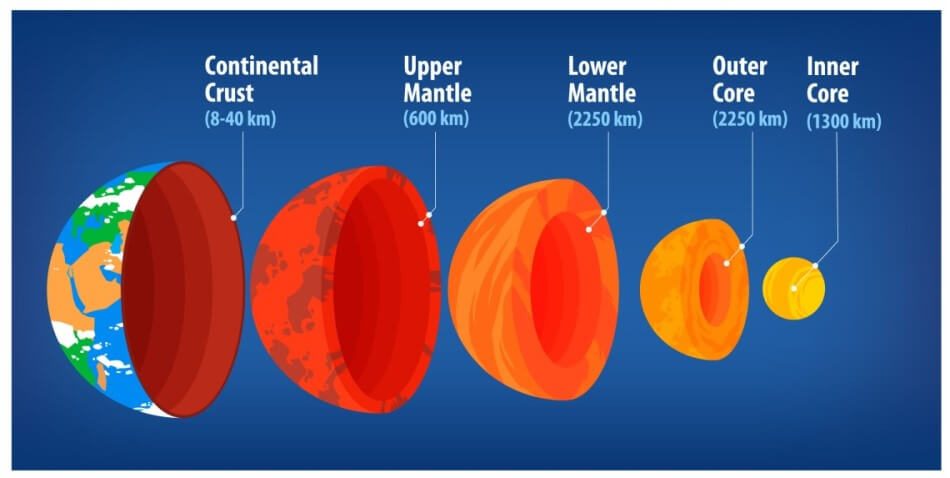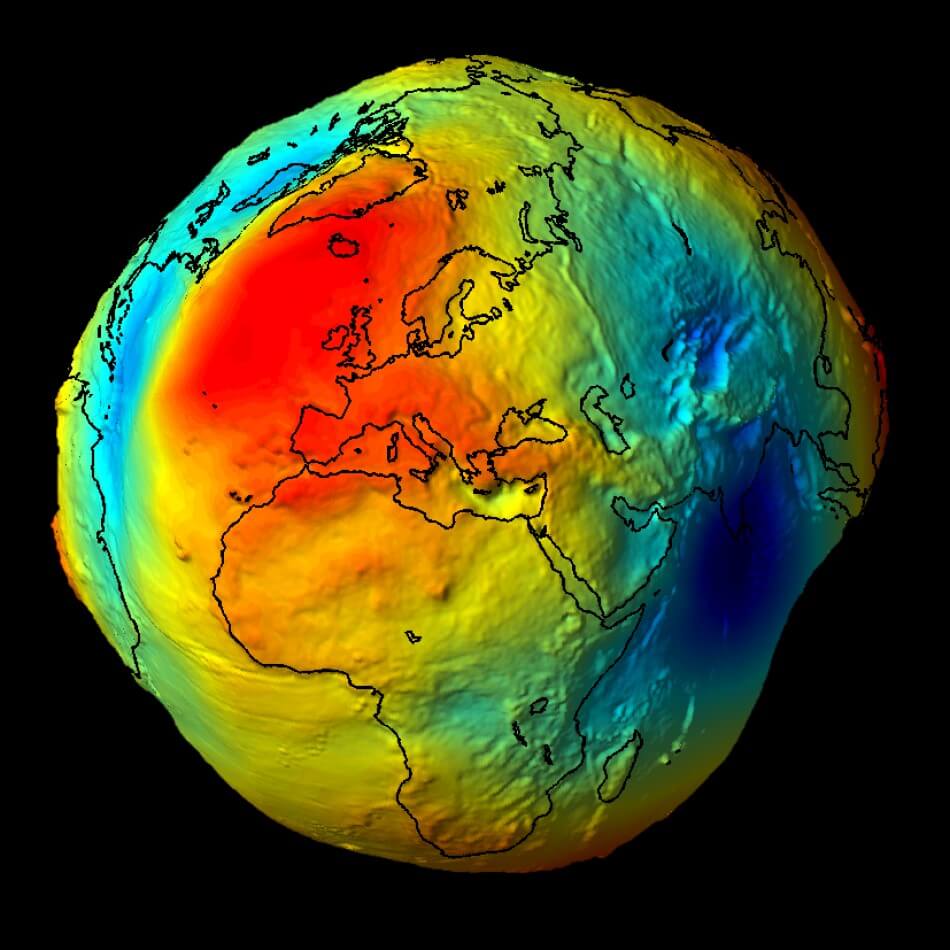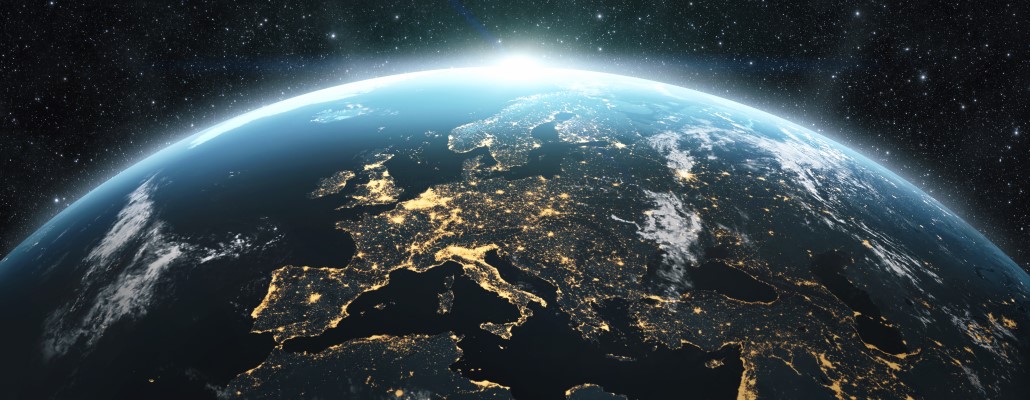The Earth is a fascinating planet that supports life and is home to animals, plants, and humans. Being the third planet from the Sun, it is the fifth largest planet, which combines elements such as atmospheres, seasons and water in just the right way. Often referred to as the ocean planet, the Earth’s surface is 70% water. Read on below to learn more fun facts about our special planet.
1. The Earth has a powerful magnetic field that protects us from solar winds and meteors.
These meteors usually burn up before they reach the Earth’s surface!
2. The Earth’s atmosphere is mainly made up of mostly nitrogen and oxygen.
The split is around 78% nitrogen, 21% oxygen and 1% ‘other’ gases.
3. The Earth is comprised of a number of layers.
The Earth’s crust being the outside rocky layer, followed by the mantle, the outer core, and lastly, the inner core.

4. Interestingly, Earth is also made up of a number of elements such as iron, nickel, oxygen, silicon, aluminium, and calcium.
The exact composition of the Earth’s mass is 32.1% Iron, 30.1% Oxygen, 15.1% Silicon, 13.9% Magnesium, 2.9% Sulfur, 1.8% Nickel, 1.5% Calcium, and 1.4% Aluminium. That leaves 1.4%, which is trace (not a lot) amounts of other things.
5. Seven large landmasses called continents that comprise the geography of the earth.
These are Africa, Asia, Europe, North America, South America, Antarctica, and Oceania.
6. The Earth also has five major water bodies called oceans that include the Atlantic, Indian, Pacific, Southern, and Arctic oceans.
The Pacific ocean is the Earth’s largest ocean basin, which contains more than half of the free water on our planet and covers an area of about 59 million square miles.
7. Have you observed on a dark night, when the moon shines brightly above you?
Did you know that the Earth has one moon or natural satellite, which is the fifth largest moon in the solar system!
8. The Earth is not spherical, it’s actually an oblate spheroid.
Spherical means perfectly round, whereas the Earth is bulging in places.

9. The Earth spins on its axis and also revolves around the Sun.
The orbital speed of the Earth around the sun is about 67,000 miles per hour (107,000 km/h).
10. The highest point above sea level on Earth is Mount Everest.
Mount Everest is located in the Mahalangur section of the Himalayas, where the mountain’s summit straddles the border separating Nepal and China.
11. The deepest part of the ocean is called the Challenger Deep.
It’s located located in the Western Pacific Ocean and the deepest point on the ocean floors is -10,916 meters in the Mariana Trench, which is huge, roughly the size of Mexico.
12. The longest river in the world is the Nile.
It spans 4,135 miles (6,650 kilometres), which mostly runs through Egypt and passes nine other African countries – Sudan, Uganda, Eritrea, Ethiopia, Tanzania, Kenya, Rwanda, Burundi, and the Democratic Republic of Congo.
13. In terms of water volume, the Amazon is the largest river on Earth.
The Amazon river spans 3,980 miles (6,400 kilometres).
14. Tamu Massif is known to be the most massive and largest volcano on Earth.
This volcano is roughly the size of New Mexico and over four kilometres above the Pacific seafloor. An interesting fact is Tamu Massif is approximately 50 times larger than Mauna Loa, which is the biggest active volcano in Hawaii.
15. Surprisingly, the fiery award for the hottest spot on our planet goes to El Aziza in Libya.
The recorded temperature hit 136 degrees Fahrenheit (57.8 degrees Celsius) on September 13, 1922, according to NASA Earth Observatory.
16. The coldest place on Earth is found in Antarctica where the winter temperatures drop below minus 100 degrees Fahrenheit (minus 73 degrees Celsius).
The lowest temperature recorded on our planet was from Russia’s Vostok Station, where the air plunged on July 21, 1983, to a bone-chilling minus 128.6 degrees Fahrenheit (89.2 degrees Celsius), according to the USGS.
17. The lowest point on land is the Dead Sea located between Jordan, Israel, and the West Bank.
The surface of this super-salty lake is 1,388 feet below sea level.
18. An interesting mystery is at Racetrack Playa in Death Valley National Park where rocks and huge boulders move along the dry lake bed on their own.
Yes, you read it correctly, rocks with rough bottom surfaces leave straight striated tracks while smooth bottom surfaces leave wandering tracks.

19. Coral reefs are tiny organisms called polyps, which are relatives of sea anemones, that live together in large colonies.
The largest coral reef in the world is the Great Barrier Reef, located off the coast of Australia, stretching for 2,600 kilometres
20. In the Giant Forest of Sequoia National Park, lies the General Sherman giant sequoia.
It’s known as the largest stem tree by volume on Earth, where its trunk contains more than 52,500 cubic feet of material.
21. The Kitti’s hog-nosed bat is the world’s smallest mammal.
It’s found in southeast Asia measuring only about 1 inch long and weighing only 0.071 ounces.
Earth FAQs
What are the layers of Earth?
Broadly speaking, the Earth has 5 layers. These are, in order of outside in, the crust, upper mantle, mantle, outer core and inner core.
How many oceans are on Earth?
Historically there are four oceans, known as the Atlantic Ocean, Pacific Ocean, Indian Ocean and Arctic Ocean. However, the Southern Ocean (Antarctic Ocean) is now regarded as the fifth ocean.
Where is the driest place on Earth?
The Antarctica is known as the driest place on Earth. Desert in Chile is known to be the driest place on our planet. More specifically, the Dry Valleys, which haven’t seen rainfall for nearly 2 million years.
Where is the wettest place on Earth?
The wettest place on Earth is Mawsynram, in Indea. It sees nearly 12,000 millimetres of rainfall each year, and has many rivers and waterfalls.
Where is the hottest place on Earth?
Death Valley is the current record holder for the hottest air temperature. In Furnace Creek, temperatures reached a high of 56.7c (134 Fahrenheit), way back in the sumer of 1913.
Where is the coldest place on Earth?
Not only does Antarctica hold the record for the driest place on Earth, it also holds the record for the coldest. A temperature of -92.3c was recorded in 2010, when Scientists used the Landsat 8 satellite to record the temperature at the high ride of the Eat Antarctic ice sheet.
